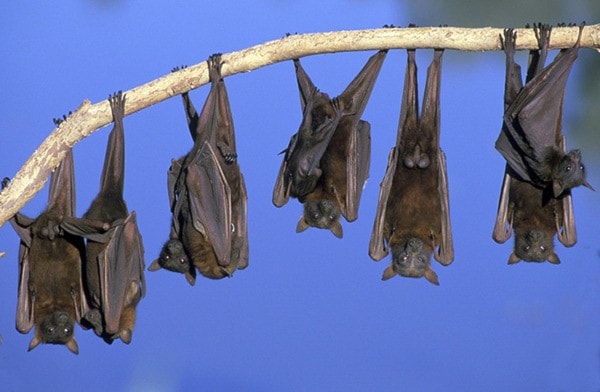Spring has sprung, birds have returned, bees and other insects are reappearing. And so are bats.
Interior Health is warning that bats can put you at risk for rabies, and whether you are fascinated or fearful, the bottom line is you should avoid physical contact with bats as they are the primary carrier of the rabies virus in B.C.
Rabies is a very serious disease that affects the nervous system. It is almost always fatal if not treated in time. Last year, 32 people in the Interior Health region were treated for potential exposure to rabies.
“Many people will be bringing summer gear out of storage or heading out to open the cabin. Activities like these can lead to unexpected encounters with bats,” said Jennifer Jeyes, Communicable Disease Specialist with Interior Health. “Bats often fly into poorly sealed cabins and homes, they roost in attic spaces and they can even be found hanging inside closed patio umbrellas.”
Juliet Craig from the Kootenay Community Bat Project agrees that people should be cautious about coming into contact with bats, and the health authority should be notified if you have any contact.
“We also promote the messages that bats are very important in our ecosystems, they are not dangerous — if you don’t touch them — and that half of the bat species in BC are of conservation concern,” Craig said.
According to IH, between four and eight per cent of the bats that are tested after coming into contact with people are found to have the rabies virus. Infected bats can transmit rabies to humans when their saliva comes into contact with a person’s mucus membranes (eyes, nose, mouth) or through a break in the skin.
Craig says the overall number of infected bats is very small.
“Scientists estimate that the incidence of rabies in the free flying bat population is less than one per cent, and this rate varies between species. This risk is low and negligible if proper precautions are taken (i.e., never handle bats, keep pet vaccinations up to date and keep human living areas sealed tightly from areas where there are bats). There is no link between having a bat-house or bats in a building and a higher incidence of rabies. Since 1950, there have been only six cases of bat-related rabies mortality in Canada.”
To contract rabies you must come into direct contact with an animal carrying the virus, Craig says. Direct contact means that you must have contact with infected blood or saliva and exposure means contact through a break in your skin. This could be a very small (almost invisible) break in the skin or internally (mouth or nose). Avoid direct contact with bats. In all cases where there has been potential exposure (i.e., contact with bat saliva or blood) to humans, contact your local health authority immediately. If possible, collect the bat that has come into direct contact with a person so it can be submitted for rabies testing. Live bats should be placed in a sealable container (equipped with air holes) and kept in a cool, dry place away from pets or humans until testing can be arranged. Use leather gloves to collect the bat, whether it is dead or alive. For more information, see http://www.healthlinkbc.ca/healthfiles/hfile07.stm. Note that Interior Health has changed its policy and no longer requires post-exposure rabies vaccinations if a bat is simply found in a bedroom.
Pet owners should make sure that rabies vaccinations are up-to-date for all pets. Local veterinarians should be consulted whenever pets have been exposed to a bat or any other potentially rabid animal.
